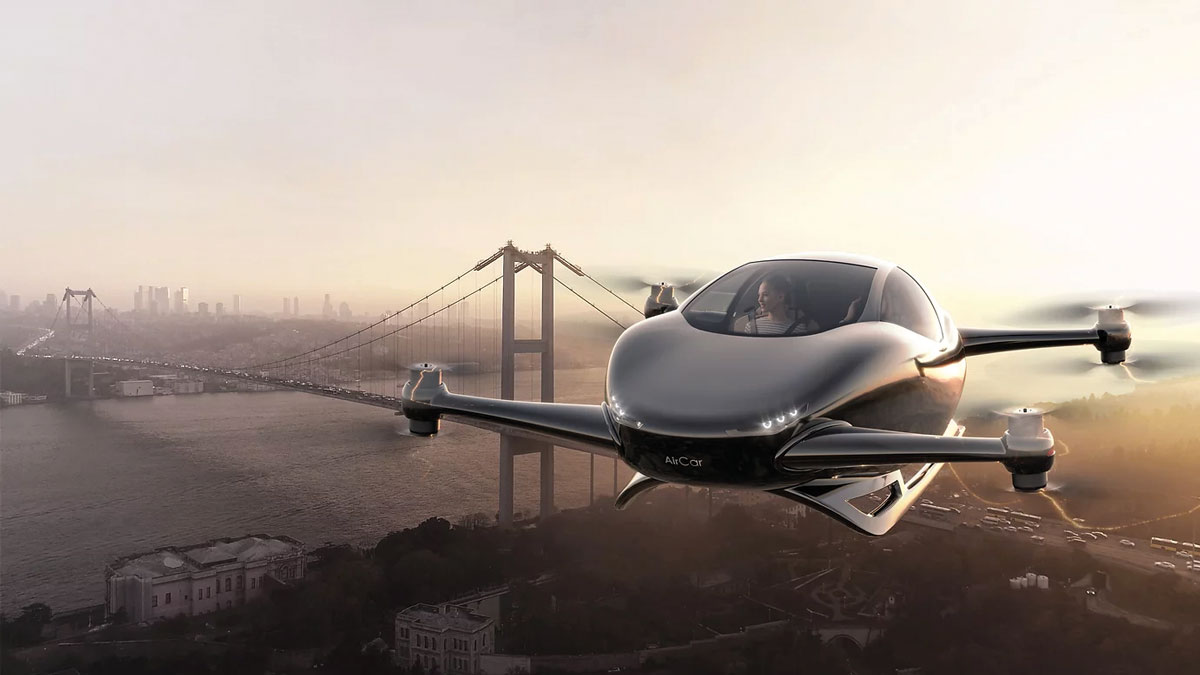Future Urban Mobility: eVTOL, an Economic Reality?
Flying Cars Are Here
The idea of eVTOL seems to be torn from SF movies. But today, in this major urban agglomeration, flying cars are one of the solutions to get around quickly and environmentally friendly. There are many projects, designed a long time ago, but putting into circulation this type of vehicle requires even more time.
Over 50 companies are developing several prototypes of flying cars
Around the world, over 50 companies are developing several prototypes that can carry up to 20 passengers. Several manufacturers are involved in flying vehicle projects, a type of hybrid between car, plane, and helicopter. These vehicles are officially called ‘eVTOL’, designating electric vertical take-off and landing aircraft. They are environmentally friendly, as they are fully electric and designed not to produce direct CO2 emissions.
According to IBA company, which provides data and advice in the aviation sector, the market for these vehicles is expected to reach over EUR 21 billion in 2035. A figure that determines investors to turn their gaze to the sky.
AirCar (Turkey)
Among the companies that are developing flying car prototypes, the Turkish start-up AirCar, since its establishment, in 2017, has been seeking technological solutions to road congestion in cities. Established in the Turkish equivalent of ‘Silicon Valley’, the company is working with the largest software producer in the country. Instead of waiting for governments to build wider roads and improve the public transport offer, the company has chosen to aim higher. Its final goal: to have a network of flying taxies, fully electric and autonomous. After the completion of over a thousand small-scale tests, the tests on a full-size prototype started a year ago. According to AirCar CEO Eray Altunbozar, the company will be able to transport the first passengers at the beginning of 2025.
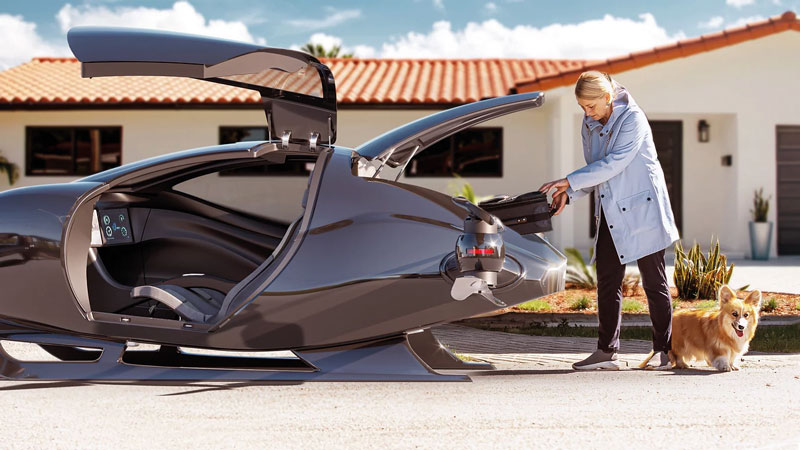
Since the beginning of 2021, AirCar started testing full-scale model, autonomous software, and definition of type certification requirements for European Aviation Safety Agency (EASA) Federal Aviation Administration (FAA). To enable the most efficient and reliable aircraft, the company is continuously developing state of art technologies for each component of the AirCar. By combining art and science, AirCar will revolutionise how we transport in the cities in a few years, the company representatives say.
AirCar (Slovakia)
Stefan Klein is a Founder and CEO of KleinVision. He devoted the last twenty years converting his flying-car dream into reality. Currently, he completed the flying prototype of AirCar that has been tested successfully at Nitra airport in October 2019. Stefan Klein left AeroMobil company in the 2016 to pursue his applied research and design in his own company KleinVision, s.r.o. co-founded with his friend and entrepreneur Anton Zajac in 2017. AirCar has been developed in KleinVision since 2017 and represents a brand new, patented technology. 12 patents protect a new and unique way of transformation from aircraft to car and vice versa.
On 24 January 2022, the dual-mode car-aircraft vehicle has been issued the official Certificate of Airworthiness by the Slovak Transport Authority, following the successful completion of 70 hours of rigorous flight testing compatible with European Aviation Safety Agency (EASA) standards, with over 200 take-offs and landings.

“AirCar certification opens the door for mass production of very efficient flying cars. It is official and the final confirmation of our ability to change mid-distance travel forever,” said Professor Stefan Klein, the inventor, leader of the development team and the test pilot. “50 years ago, the car was the epitome of freedom,” added Anton Zajac, the project cofounder. “AirCar expands those frontiers, by taking us into the next dimension; where road meets sky.”
CityAirbus NextGen (Europe)
CityAirbus NextGen is an all-electric, four-seat vertical take-off and landing (eVTOL) multicopter concept featuring a wing. It boasts an 80-km range and a cruise speed of 120 km/h – making it perfectly suited to zero-emission flight operations for a variety of applications in major cities.
The idea for an efficient air transport service between strategic locations in urban and suburban environments first came from the company’s belief that city commuting can be moved into the sky in a sustainable way. With decades of experience certifying aircraft, the Airbus team began by rethinking traditional aircraft architecture, creating a multirotor design based on electric motors. After years of dedicated research and innovation – including the successful development of two electric eVTOL demonstrators, CityAirbus and Vahana – along with technology to improve sound emissions across Airbus’ portfolio of products, CityAirbus NextGen was born. The lessons learned from this double-demonstrator approach have been essential to the creation of this new generation of eVTOL.
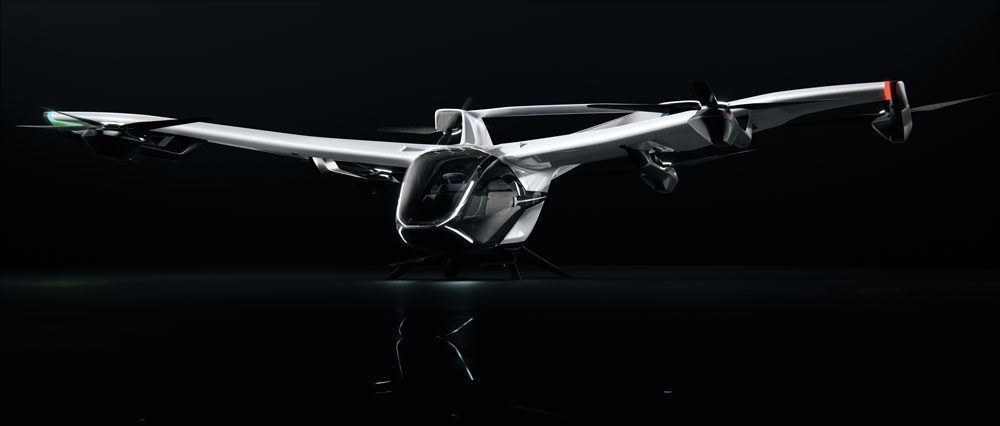
CityAirbus NextGen is designed to offer best-in-class economic performance in operations and support. The unique configuration incorporates the following design elements:
- A fixed wing
- A V-shaped tail
- Eight electric-powered propellers as part of its uniquely designed distributed propulsion system
- No moving surfaces or tilting elements
- A spacious cabin with four seats and easy boarding
The multicopter is optimised for hover and cruise efficiency and does not require moving surfaces or tilting parts for the transition from hover to cruise.
After initial validations – including 242 ground and test flights with the Vahana and CityAirbus demonstrators covering around 1,000 km total as well as test flights with a subscale model – CityAirbus NextGen entered its detailed design phase in 2021, with the prototype’s first flight planned for 2023.
Lilium Jet (Germany)
The first flight of the prototype of this flying car has already made a big splash. Even though no one was on board and Lilium Jet was piloted from a distance, this was a big step forward for this German start-up. We will have to wait until 2025, when Lilium Aviation plans to market a 10-meter-long version able to carry five persons at a speed of 300 km/h. The project targets flying taxi companies.
Lilium is creating a sustainable and accessible mode of high-speed, regional transportation for people and goods. Using the Lilium Jet, an all-electric vertical take-off and landing jet, offering leading capacity, low noise, and high performance with zero operating emissions, Lilium is accelerating the decarbonization of air travel. Working with aerospace, technology, and infrastructure leaders, and with planned launch networks announced in Germany, the United States, and Brazil, commercial operations are projected to begin in 2024.
In 2021, Lilium accelerated towards its goal: a revolution in sustainable regional air mobility. The company launched its 5th generation technology demonstrator test flight campaign and confirmed the first Vertiport networks in the US and Europe. Lilium brought on board leading aerospace suppliers and signed commercial deals that will open new markets.

Throughout the year, Lilium made public significant long-term partnerships – with global aerostructures manufacturer Aciturri, to build the airframe of the Lilium Jet, with Honeywell, a world-leading manufacturer of electronics, engines, and mechanical systems for aircraft, to develop the Lilium Jet’s avionics and flight control systems, and with CUSTOMCELLS, a German manufacturer of customer-specific lithium-ion battery cells, to produce high-performance silicon-anode batteries.
In October 2021, ABB E-mobility agreed to develop, test, and supply the MegaWatt fast charging infrastructure across Lilium’s Vertiport network worldwide. Designed to be capable of fully charging batteries in approximately 30 minutes, and charging up to 80% in 15 minutes, they will help enable up to 20-25 flights per aircraft per day. It is another crucial step towards Lilium’s aim to make sustainable, high-speed regional air travel a reality for communities around the world.
Pal-V (the Netherlands), a car that flies, a plane that drives
In the last decades, the Netherlands has been recognized worldwide for its breakthroughs in technology and product engineering.
The flying car concept developed by the Dutch company PAL-V is based on the technology of the autogyro (the ancestor of the helicopter), whose take-off is not vertical, but a little shorter than that of the helicopter. A PAL-V aircraft is a three-wheeled vehicle with a rotor with two blades attached and can carry two people and 20 kg of luggage at 160 km/h over a length of 1,315 km. PAL-V is already on the market and costs EUR 499,000 for the Pioneer version and EUR 299,000 for the sports version.

“As soon as Nicolas Cugnot invented the automobile and the Wright brothers made their first successful flight, people started dreaming of combining the two into a flying car. It turned out to be more complicated than initially estimated – a complex puzzle. Nevertheless, once solved it would create ultimate freedom in mobility. The Pioneer Edition is for those that want to be part of the group of 90 that writes history with us. They will be at the forefront of a mobility revolution, where we will no longer have cars that can only drive. They will be the first car flyers in their country, fly driving to any destination,” Robert Dingemanse, CEO and co-founder of PAL-V, says.
Jetson ONE (Sweden)
Jetson is a Swedish company with a mission to change the way we travel. They aim to make the skies available for everyone with their safe personal electric aerial vehicle. Jetson was founded by Peter Ternström and Tomasz Patan in 2017.
Jetson’s prototype ‘proof of concept’ was finished in the spring of 2018, and until now the company has been busy working on a consumer-friendly version. That project resulted in Jetson ONE, a commercially available personal electric aerial vehicle that you can own and fly.
The Jetson ONE is constructed of a lightweight aluminium space frame and carbon-kevlar composite body.
It is powered by eight electric motors, has a flight time of 20 minutes, reaching a top speed of 102 kilometres per hour (63 miles per hour). It runs on a high discharge lithium-ion battery and can carry a pilot’s weight of 210 pounds 100 kg.
The ONE eVTOL has already sold out its limited production run for 2022 and is now taking orders for 2023.
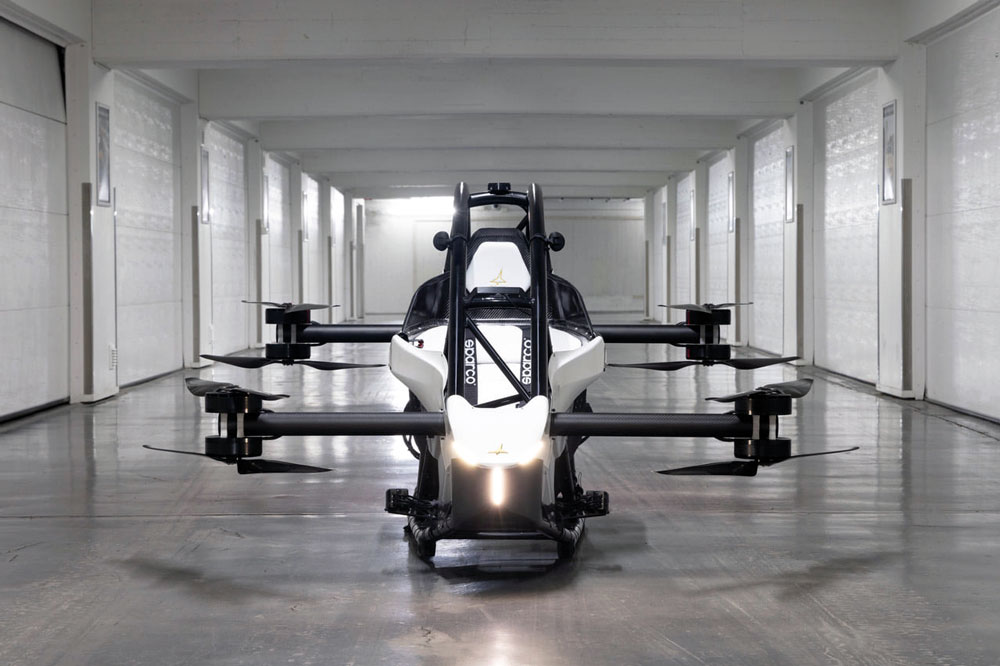
“It is important for us to find the right investors now as we expand and grow our company. Jetson is looking globally for a company that shares our vision,” Tomasz Patan, co-founder and CTO, said. “We are at the forefront of a new industry. The skill set needed to lead in this industry is incredibly niche. As is the mindset and energy to be in a company that wants to shape the future.”
Jetson is currently the only eVtol company on the market that can provide a commercially available personal electric vehicle.
The demand for the Jetson ONE has been ‘phenomenal’, says the company, supporting its “dream to make everyone a pilot”.
“We have a big challenge ahead of us, to finalise a production-ready Jetson ONE, and to prepare it for mass production in 2023. This is an incredibly exciting time for us but also for the eVtol industry,” Peter Ternstrom, co-founder and president of Jetson, noted.
The first exclusive buyers can expect to receive their Jetson ONE in the Autumn of 2022, the company’s representatives announced. The price for the Jetson ONE is USD 92,000 with an USD 22,000 deposit.
Cartivator Skydrive (Japan)
Financially supported by Toyota, Cartivator consists of a group of young Japanese engineers from various fields who work on a flying car concept in their spare time. Cartivator Skydrive is a small, individual, three-wheeled vehicle with four small foldable rotors to take off. The young engineers say that by 2050 they will be normal vehicles.
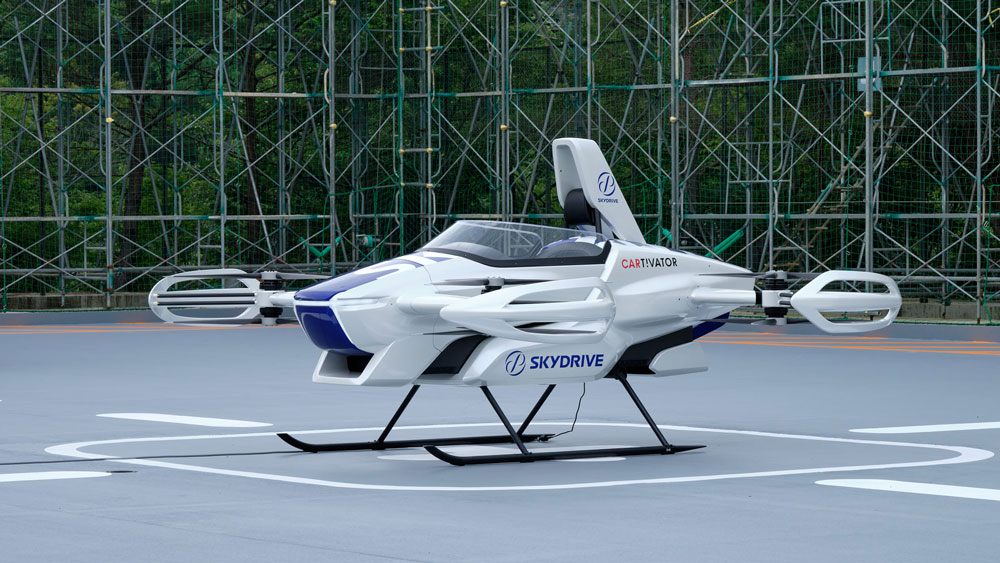
The Cartivator SkyDrive is subscale electric Vertical Take-Off and Landing (VTOL) prototype. The full-scale production has been estimated to be 3.6 m long X 1.1 m high X 3.1 m wide in flight. The aircraft will have a cockpit with two forward and two aft VTOL propellers extended beyond and below the fuselage sides. Target maximum speed is 100 km/h, and the average travel speed is expected to be 60 km/h with a 50 m altitude. Its maximum take-off weight will be 400 kg and carry two people.
Carplane (Germany)
The flying car model proposed by Carplane stands out through its particular design, juxtaposing two fuselages. The German group justifies its choice of separating the two passengers for the sake of efficiency. In car mode, the folded wings fit between the two cockpits, improving aerodynamics, and protecting them from impact. In flight, Carplane announces a range of over 800 km at a speed of 200 km/h. The project is supported by the European Union and the German Land of Lower Saxony.
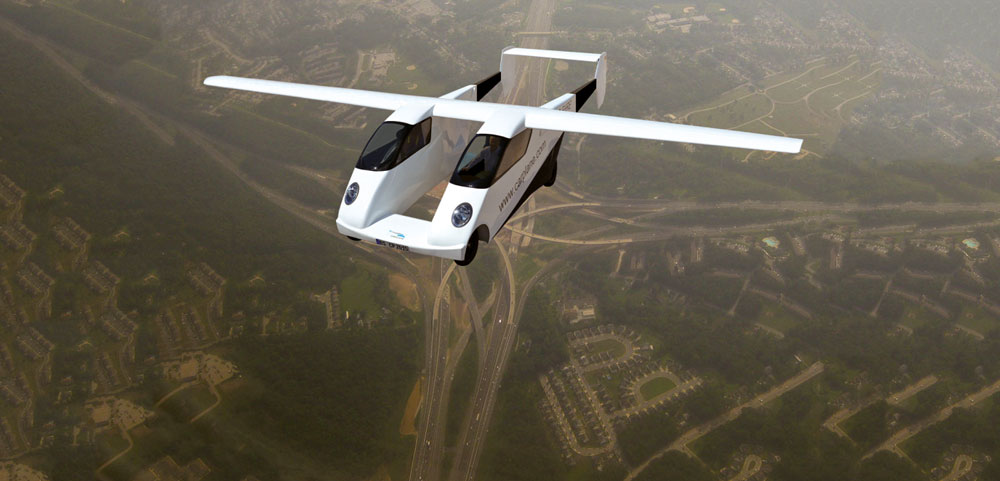
The Carplane is a bimodal vehicle for individual road and air transport. It will be the world’s first regularly certified aircraft to conform to road particle emissions standards. Its motor is located between two hulls, thus reducing noise emissions. It converts between modes in 15 seconds.
Terrafugia Transition (United States of America)
Terrafugia Transition is one of the pioneers of the 21st century version of the flying car Terrafugia is a US company founded in 2006 by five MIT graduates. It designed Transition, a two-seater car with two retractable wings that turns into a small passenger plane. Two prototypes have already completed around 100 hours of flight. In the long run, Terrafugia is already working on TF-X, a car equipped with two rotors capable of taking off and landing vertically.
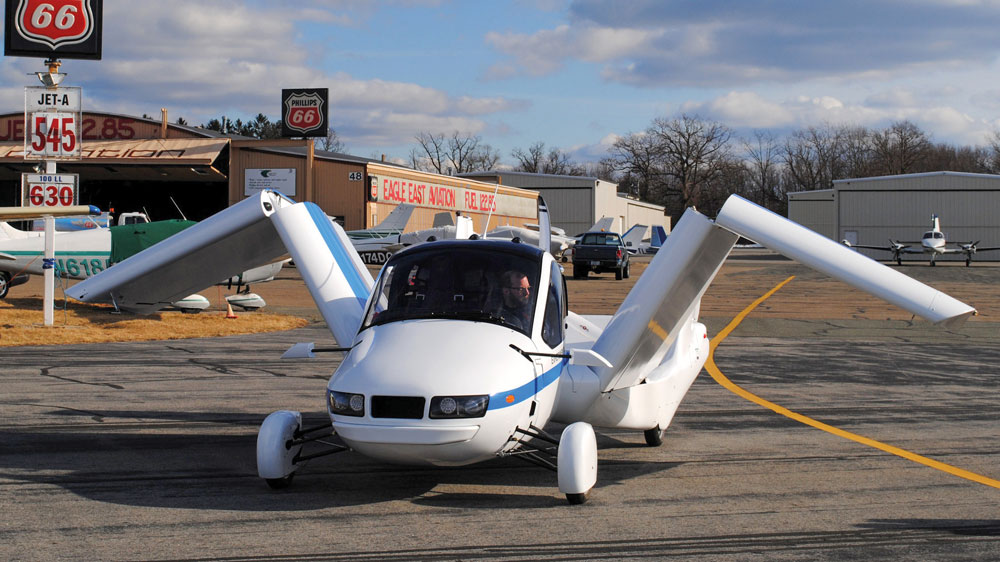
The Transition brings the dream of the flying car to life. It seats two and converts from drive mode to flight mode in under a minute with just the push of a button. Eliminating the hassle of hangar storage, ground transportation, and aviation fuel, the Transition fuels up with automotive gas and can be stored in your home garage.
Joby Aviation (United States of America)
Founded in 2009, Joby Aviation is working on an electrically powered flying vehicle capable of carrying two passengers. Based on the vertical take-off/landing technology, S2 from Joby Aviation, the vehicle has the 12 rotors folded after take-off, while four propellers take control to ensure propulsion. With a speed of 320 km/h, the announced price of the S2 is USD 200,000 (around EUR 180,000). Joby is also developing other two concepts with NASA: an electric drone and an electric aircraft.
On January 2022, Joby Aviation received FAA Special Airworthiness Certification and US Air Force Airworthiness Approval for a second pre-production prototype aircraft in December 2021, as expected.
The first pre-production prototype generated 65 terabytes of test data in 2021, flying more than 5,300 miles, including what is believed to be the longest flight of an eVTOL aircraft to date, at 154.6 miles on a single charge.
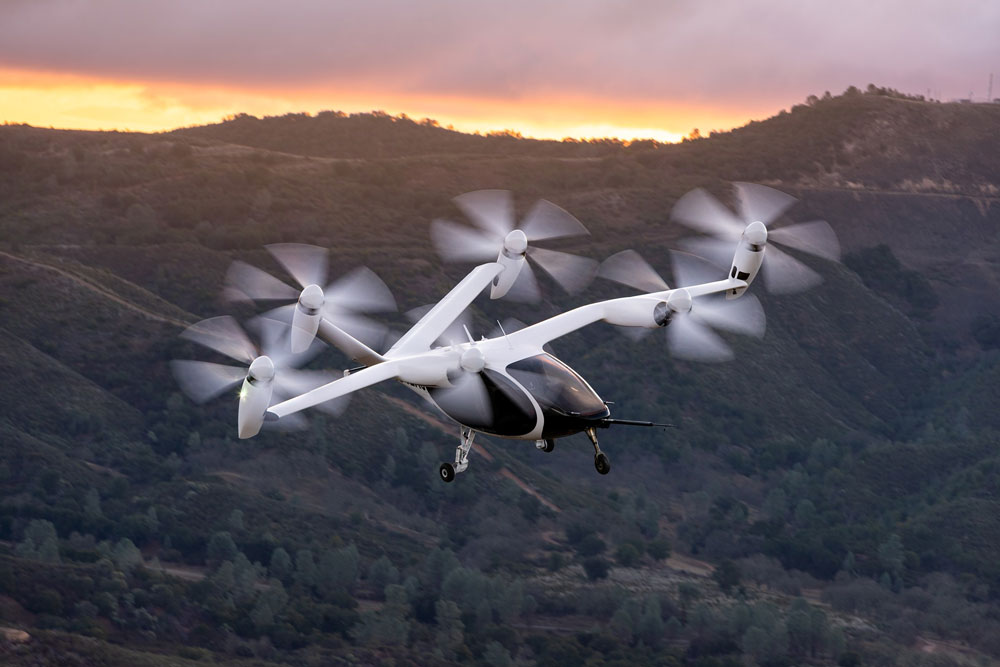
As planned, the second aircraft will significantly accelerate Joby’s capacity for flight testing in 2022, further supporting the company’s ambition to certify its aircraft with the Federal Aviation Administration (FAA) in time to launch commercial operations in 2024. The aircraft is expected to begin flying later this month and will be put into service as part of Joby’s Agility Prime contract with the US Air Force.
In 2020, Joby became the first and only eVTOL company to sign a G-1 (stage 4) certification basis with the FAA, having received an initial (stage 2) signed G-1 from the FAA in 2019.
Uber Elevate (United States of America)
Uber Elevate is not a flying car concept, but the vision about an urban network of flying cars. It describes a complete ecosystem: from the type of cars to the ‘vertiports’ to host them, as well as traffic control, driver training, traffic safety. But this industry still has to face many opposing views.
“If we take into account the load or the number of passengers that a train offers and compare it with a conventional helicopter, the train has many more advantages. Therefore, to be able to carry hundreds of people, you would have to burden the air space and I am not sure people will accept it,” says Andreas Bardenhagen, professor at the Technical University of Berlin.
In December 2020, Uber Technologies has agreed to invest USD 75 million in Joby as part of a broader transaction involving the acquisition of Uber Elevate by Joby.
Established in 2016, Uber Elevate has played an important role in laying the groundwork for the aerial ridesharing market by bringing together regulators, civic leaders, real estate developers, and technology companies around a shared vision for the future of air travel.
Towards new legislation
Another complication: national and international regulations on flight devices. Using aircrafts that fly and exceed a certain weight is very strictly regulated both by the European Aviation Safety Agency (EASA) and the US Federal Aviation Administration (FAA). Each country in the world has regulatory bodies that supervise quite strict guidelines of design and manufacturing.
Today there is no specific law governing the car of the future. Therefore, those who want to fly will have to submit to the same rules of traditional aviation, namely, among others, a mandatory take-off from an aerodrome and, above all, holding a pilot’s license. These seemingly prohibitive constraints have, however, been well understood by carmakers who want, as a first step, to sell flying taxis, which would have two advantages: they could take off and land vertically, such as drones, which would avoid going through the aerodrome. Moreover, the flying vehicles would be autonomous, without driver; therefore, no training and license would be required to pilot them. Despite these advantages, legislation in this field will still be required.
Rules to apply
Before any marketing, an air code should be defined, so that users can share the air space in the best possible way. Indeed, what vehicles would have priority? Aircraft? Helicopters? Autonomous cars? What will the maximum speed of flying cars be? Should there be air routes established which the flying devices will be required to take, or they should be allowed to choose, in terms of travel, as long as the safety distances are met and there are no blockages? Where will they be allowed to land? There are so many answers to be given, which will take time, especially if the flying vehicle can travel over cities.
While, technically speaking, great progress has been achieved over the past few years, there are several barriers that remain to the development and generalization of flying cars:
- Runway
Many of these vehicles require access to an aerodrome for take-off and landing. Indeed, to gain enough speed to leave the ground, the vehicle sometimes needs several hundred meters. Therefore, it is necessary to join a runway located on an aerodrome. This takes time for transport and constitutes a constraint, even though this type of vehicle should reduce the transport time.
- Security
Most vehicles are still in the prototype stage. Their generalization involves compliance with very strict safety standards. It refers to both the reliability of the aircraft and the competence of the pilot. A city car driver can be an ace in the city, but that doesn’t make him an aircraft pilot! This also raises the issue of the flight license. Prospective drivers of flying cars should always have a pilot’s license, but who will provide such training?
- Rules
The development of flying cars can make possible the improvement of road congestion, but risks congesting airspace. These future flying vehicles will therefore have to find their place among passenger transport planes, helicopters, drones… This involves, without any doubt, a review of all aviation legislation.
- Cost
In the end, the price of these flying cars is still a brake to the development of this industry. The models that are starting to be marketed cost several hundred thousand euros/piece. Ian Constance, CEO of Advanced Propulsion Centre, a specialized laboratory in the UK, says that: “At the moment, the idea of a flying car is indeed a toy of a rich man, and these toys will be built in a small number”.
eVTOL for freight transport
The makers of the flying cars promise that they will carry passengers over short distances, but what about freight? The management of France’s Flying Whales says its massive aircraft can carry 60 tons of payloads over long distances, in a sustainable way. They believe that the technology developed by the company could revolutionize the health sector. “The idea is to use a high-capacity aircraft on an island or in a remote area to ‘provide’ a hospital. We leave it there for two weeks, then we go on, and the crew will take care of all the people in need and then we take it to another place where it stays again for two weeks, then we can come back every year, two or three times a year, according to the needs and, thus, we can offer the isolated populations the same quality of being taken care of, as in the big cities,” stated the managers from Flying Whales.
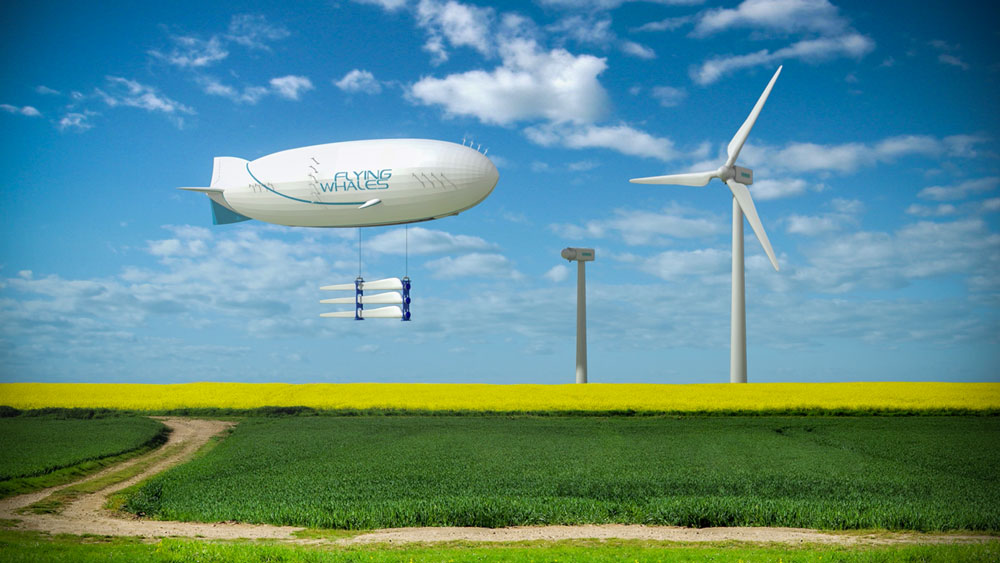
A first eVTOL in 2021, 70 pre-orders
It’s about Pal-V Liberty. To achieve this goal, the Dutch company has complied with the laws currently in force, meaning that to drive his aircraft, a driver must be in possession of a pilot’s license and several hours of training. He will also have to go to an aerodrome for take-off. The difficulty would be the high price (EUR 540,000!). But which did not prevent about 70 pre-orders. Pal-V Liberty also has the advantage of being a versatile vehicle. Of course, it can fly at up to 320 km/h, but it can also travel on traditional roads at up to 160 km/h. This petrol car switches from ‘airplane’ mode to ‘car’ mode in 10 minutes (the propeller used to propel the aircraft is then retracted onto the roof). The futuristic car can accommodate a second passenger.
The conclusion refers to the future economic reality of these types of flying cars. The conditions for using them raise question marks: will the concept be reserved to the rich ones, or it will be able to transform the way we travel?
In any case, the sky offers an infinite space for innovation.


